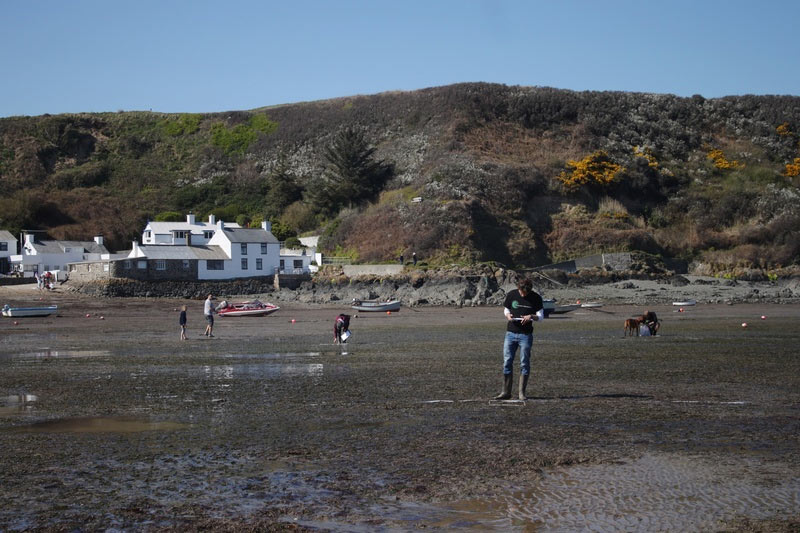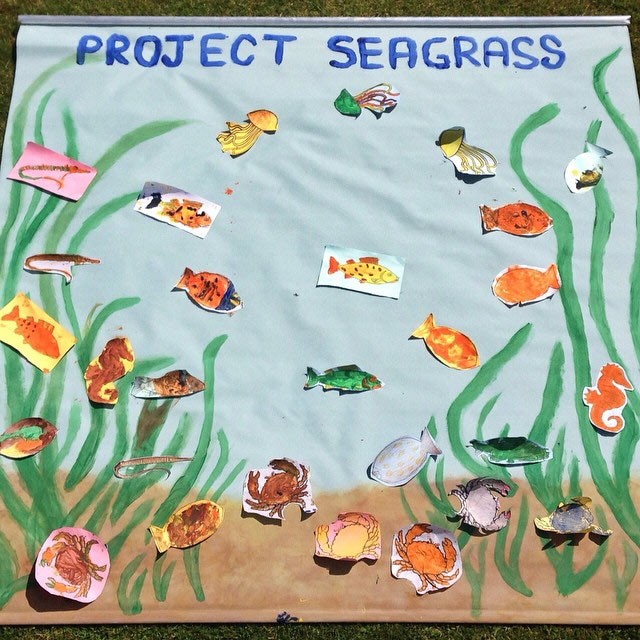
We’d like to start 2016 by saying a big thank you to everyone that’s been with Project Seagrass for its 3rd year, which has without a doubt been our most successful yet. From urging the government to consider important UK seagrass areas to receiving charity status; from kicking off monitoring at our first long term SeagrassWatch site to starting the first ever seagrass restoration trial in Wales, its been quite a exciting year. We’re very proud to be helping the fight to protect our seagrass for the future. However, none of this would be possible without your support, our partners and sponsors, the help of a number of volunteers, and the generosity of the public.
The last 3 years have seen Project Seagrass evolve from merely a seed in the mind of its founders to a full blown environmental charity. Some of the highlights of the year include:
Response to the consultation process on Marina Conservation Zones (MCZs)
Back in early 2015 we were proud to offer our response urging the government to protect important seagrass habitats around the UK. In the response we requested that DEFRA reconsider its exclusion of Bembridge, Norris to Ryde, Studland, and Yarmouth to Cowes from the 2nd tranche of MCZs.
In our survey of seagrasses around the British Isles only two sites were found not to have been impacted by poor water quality and additional studies utilising GoogleEarth and site visits have revealed the extent of the threats imposed by the impact of inappropriate moorings throughout the UK. Examples of the degradation that current mooring practice causes can be seen at Studland Bay, Poole Harbour, Salcombe and around the Isle of Wight.
Although in the round of proposed MCZs, the seagrass meadows at Nettle and Mount Bay were included, neither are extensive nor particularly threatened. Adding protection to both of these sites may help in the long-term but is unlikely to have any immediate effect on their management or conservation; effectively these sites are ‘easy wins’ for MCZ creation as neither spots have particular value for alternative uses. By contrast, seagrass meadows surrounding the North and East of the Isle of Wight and throughout the Solent are under extreme pressure, and these were not included. We’re still fighting for their protection.
Charity Status
One of our pivotal moments in 2015 was being re-constituted as an environmental charity. We celebrated this with the release of a brand new website and the start of a new “ForCodsSake” campaign. Receiving charity status has been a huge step forward for us helping us to deliver more effective projects, form stronger partnerships, increase public engagement and improve our impact to protect the marine environment.
SeagrassWatch monitoring at Porthdinllaen
2015 saw us start long-term monitoring of seagrass condition at Porthdinllaen, using an internationally acknowledged methodology from our friends at SeagrassWatch. Monitoring started with our Spring Survey in April, followed by a Summer survey in August and an Autumn Survey in November.

World Oceans Day and World Environment Day
To celebrate World Environment Day, World Oceans Day, and to promote our Seagrass Education and Awareness Programme we held a number of fun activities Haven’s Hafan Y Mor Holiday Park in Pwllheli, North Wales. Although Hafan y Mor is home to one of Wales’ largest seagrass meadows, right on its doorstep, those at the campsite were unaware it was there. Children throughout the campsite contributed to painting a seagrass mural including a variety of fish and sea creatures. At low tide there was even an opportunity for the children to have a look at the seagrass meadow. We saw it as a great opportunity to educate the general public about the importance of seagrass and discuss the benefits to the wildlife, people and the planet.

Restoration Trial
In late 2015 we begun the first ever seagrass restoration trial in Wales with the hope of developing a novel method to restore our damaged seagrass meadows and consequently help support our declining fisheries. Interest in seagrass restoration in the UK is increasing as the value of seagrass ecosystems is recognized by scientists, managers and regulators. However, despite this interest action remains limited. The UK Biodiversity Action Plan for seagrass beds specifically details the restoration of 1000 hectares of seagrass during 1997-2010. Transplantation trials in the 1980’s, the early 1990’s and in the last two years were carried out around the south coast of England, but with little success in the long-term. No seagrass in the UK has been restored to date.
During our 2015 summer SeagrassWatch survey we collected a number of Zostera marina shoots laden with seeds. Having let the seeds harden and mature within their seed pods in the aquaria at Swansea University we then sorted the seeds and placed them into hessian bags, ready for planting. During our autumn 2015 SeagrassWatch survey we buried these bags in areas of bare sediment and will check the progress during our 2016 winter, spring, summer and autumn surveys. Despite some poor survey conditions, we planted over 1,500 seeds.
If this trial is successful we hope to continue and expand the restoration trial across Wales introducing seeds from other areas to create a genetic mix that allows for hardier and more resilient seagrass meadows in the face of environmental stresses, such as climate change.

Acting Local to Save Global
The Project Seagrass team were quite busy on the global front throughout 2015. In August I visited Puttalam Lagoon, Sri Lanka to conduct a pilot survey investigating the role of seagrass meadows in providing food security for communities living around the lagoon. The research, conducted in conjunction with the Sustainable Places Research Institute, is throwing out some interesting and alarming findings with regards to by-catch and the use of destructive fishing gear in the area.

Richard also visited Sri Lanka back in October, but with a different goal, where he, along with partners from Mozambique, Vanuatu, Madagascar, Sri Lanka, Indonesia, Soloman Islands, Temor Leste, and Malaysia, attended a workshop to discuss how local partners could develop projects aimed at promoting the conservation of seagrass and dugong. This workshop brought together a range of technical experts from the fields of dugong biology and conservation, seagrass monitoring and assessment, and applied conservation decision making. Richard’s role as a technical advisor on the ecosystem services of seagrass meadows will hopefully mean some exciting developments for the conservation project in the future.
Richard and myself visited the Wakatobi, Indonesia, to initiate phase two of the Wakatobi Seagrass Program, a joint Cardiff University and Swansea University project focused on improving understanding of the links between seagrass and food security in the Wakatobi National Park while also looking to address the threats to these important ecosystems. Richard also visited Selayar to kick of a similar project there with partners from Hassanudin University in Makassar.

RJ was active in Greece again, returning to map the seagrass meadows around Lipsi and collect final BRUV data to add to the extensive dataset he’d already collected for his PhD. He also attended the Coastal and Estuarine Research Federation (CERF) conference in Portland, Oregon, where he presented the work he has been doing with the Lipsi Fishermen’s Association, as well as the International Association of Landscape Ecology (IALE) UK conference in Edinburgh with the focus of Seascape Ecology: Connecting Land, Sea and Society.

2016 and the future
It’s our hope that 2016 will see Project Seagrass moving from strength to strength. We’ve already planned some exciting activities for the year including the continuation of our SeagrassWatch monitoring as well as a number of education events. Throughout the year we’ll be closely monitoring the success of our restoration trial in Porthdinllaen and will report on our findings as the year progresses.
2016 will see the release of our phone app, SeagrassSpotter, to help map and monitor seagrass around the locally and globally. The app is currently in it’s beta testing stage and while we iron out a few final problems you can still log into the SeagrassSpotter website to record sightings on there. 2016 will also see us delivering more on the education front with two new partnerships, as well as the release of our colouring book aimed at all ages. We will be implementing schemes for volunteers, representatives and ambassadors throughout the year to deliver projects and initiatives with a real and lasting legacy.

We thank you for your commitment as a Project Seagrass supporter and welcome you back so that we can continue to develop and deliver progressive environmental projects as we develop. The conservation of the world’s natural environments is no easy feat! Its continuous we need to stay united, watchful and active in the struggle for a world in which marine ecosystems are healthy, well-managed and full of life.

